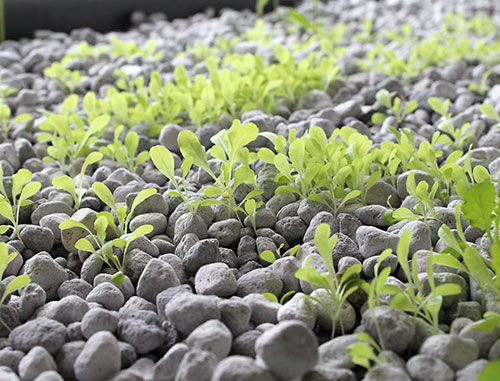Pumice – a product of volcanic activity; it is a special type of lava with a high silicate content (over 65%). It forms when large quantities of compressed gases are released in a volcanic explosion. The sudden pressure drop causes the gases to expand. Upon cooling, a glassy, very porous and light substance is formed (on average 0,5 g / cm3). Pumice is found in many parts of the world. One of the best is in Iceland. Pumice, ground to various sizes, finds many uses in construction and many industries. As a substrate, pumice has the same properties as lava. It is an inert substrate without buffering properties. Pumice has a low water-holding capacity. It is best used in mixtures. A mixture of coconut fiber and pumice stone gives a more aerated and lighter environment. If the bottom of the pot is lined with pumice, it will facilitate drainage and prevent stagnant water.

Literature
- William Texier. Hydroponics for everyone. All about home gardening. – M .: HydroScope, 2013 .– 296 p. – ISBN 978-2-84594-089-5.